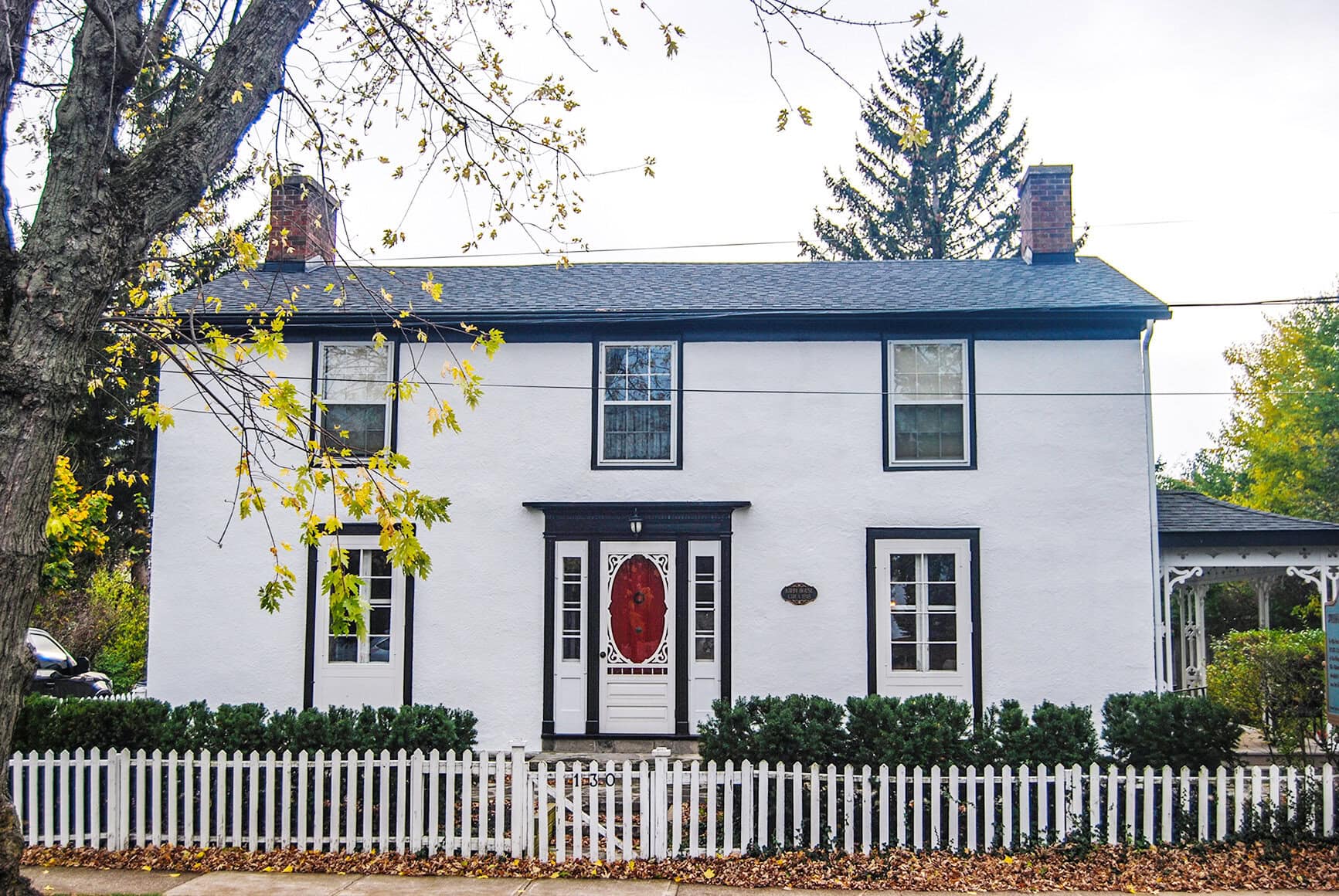After our one-week hiatus to address the appalling clear-cut of about 800 mature trees in Virgil and the shameful neglect of Old Town’s Dockland’s historical artifacts, let’s return to our “quick and dirty” examination of the criteria (started in: “Arch-i-text: A primer on property heritage designation,” Feb. 27) used to assess your property vis-à-vis heritage designation.
In that earlier article, we looked at the categories contained within Regulation 9/06 of the Ontario Heritage Act, which addresses the criteria that consider a property’s design and/or physical value and its contextual value within the setting and community.
This time, we’ll delve into the category which examines a property’s historical and/or associative value.
On occasion, satisfying the criteria contained in this category can be straightforward, in cases wherein the facts are already established (e.g. the Kirby House on Front Street) or self-evident — however, far more often a significant amount of research is required to identify and interpret the fact of historic or associative value.
So, let’s consider the first criterion in this category, which reads: “The property has direct associations with a theme, event, belief, person, activity, organization or institution that is significant to a community.”
The key words here are “direct” and “significant.”
A direct association cannot be minor, secondary or incidental — the association must be underwritten by good evidence of the property’s relevance to the theme, event, belief, person, activity, organization or institution cited.
Likewise, “significant” must meet the threshold of a theme, event, belief, person, activity, organization or institution that made a notable, strong, or influential contribution to the development or evolution of the community.
It is possible to satisfy this criterion should the property be a rare or, preferably, a one-of-a-kind example that illustrates a particular aspect of the community’s history.
Moving on to the second criterion: “The property yields, or has the potential to yield, information that contributes to an understanding of a community or culture.”
In essence, this is a question of whether the property has, or can provide, evidence of one or more notable or influential aspects of a community’s history or the history of a culture.
The evidence may be new information or simply provide a greater understanding of the community or cultural history.
Further, it could be illustrated through the property itself or the property combined with documentary, material artifacts and even oral tradition.
It should also be stated that should a property materially contribute to the comparative analysis of similar properties which yields the aforementioned “greater understanding”, it may likely fulfil this criterion.
And, finally, we have the final criterion in this category: “The property demonstrates or reflects the work or ideas of an architect, artist, builder, designer or theorist who is significant to a community.”
As distinct from the question of “craftsmanship or artistic merit” — category one, criterion three, outlined in the first article in this series — here the individual architect, artist, builder, designer or theorist portfolio of work is considered in evaluating how the property displays their “work or ideas.”
Furthermore, the property should notably contribute to understanding or interpreting the importance and contribution that the individual has, or had, made to and within the community.
Here I am reminded of the eminent Niagara architect Don Chapman’s home on Niagara River Parkway — a property which in his writings he considered to be the finest unfettered example of his design ethos amongst all of the projects in his extensive portfolio (see: “Arch-i-text: A masterwork,” Jan. 6, 2021, “Arch-i-text: Slow architecture and from whence it came,” March 23, 2023) — that would fulfil the requirements for this criterion.
At this point, we have finished our 50,000-foot overview of the legislation’s criteria to hopefully provide you with a basic understanding of the nine criteria, only two of which must be met for designation, by which a property’s heritage value is assessed.
Now, should you wish to take the next steps in undertaking a no-cost heritage designation for your property, where should you start?
First, contact the town’s heritage planners. They can provide you with the required paperwork and often some basic historical information (such as a build date) for your property.
Next, talk to the folks at the Niagara-on-the-Lake Museum. They may have a file on your property, historical photographs and other related materials.
And, speaking to the museum, they are running a workshop on understanding the land registry (notlmuseum.ca/whats-on/view/id/1024), which is a virtual resource to build a “chain of title” that may identify important historical figures who once owned your house.
Finally, you may reach out to me at homeguide.ca@gmail.com to discuss, decode and simplify the process.
Next week, we will attempt to address the myths, the pros and the cons of heritage designation.
As a closing note, remember that your property does not necessarily have to be perceived as “historic” — the minimum threshold is 40 years — to qualify for Part IV heritage designation, but it does need to meet at least two of the nine criteria defined within the Ontario Heritage Act.
Brian Marshall is a NOTL realtor, author and expert consultant on architectural design, restoration and heritage.











